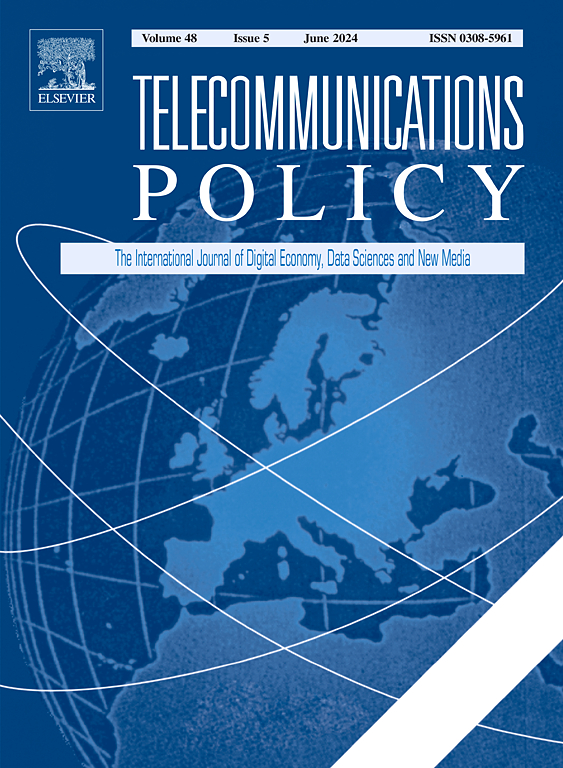The phenomena of spatial spillovers of digitalization and competitiveness inside European regions
IF 6.4
2区 管理学
Q1 COMMUNICATION
引用次数: 0
Abstract
This study examines the spatial spillovers of digitalization and competitiveness across 240 NUTS2 regions in the EU-27, addressing concerns about the widening digital divide and competitiveness challenges in the European Digital Single Market. Using Eurostat regional digitalization indicators and the EU Regional Competitiveness Index, we employ global and local spatial autocorrelation analysis to identify variables with significant spatial spillover effects. We then apply K-means clustering to determine regional susceptibility to digital and competitiveness spillovers. Our novel approach combines digitalization and competitiveness analyses at a granular NUTS2 level, revealing heterogeneous digitalization patterns across European regions. The research identifies regions where digital spatial spillovers are most effective and those at risk of being left behind. Additionally, both competitiveness and digitalization show a relevant nationalization effect, where the spatial spillover between regions appears inside each country with limited effect on neighbouring Member States. This comprehensive spatial analysis offers valuable insights for policymakers aiming to enhance open strategic autonomy, regional digital competitiveness and reduce disparities within the EU, aligning with the objectives of the Digital Decade programme and the Competitiveness Compass initiative.
数字化与欧洲区域竞争力的空间溢出现象
本研究考察了欧盟27国240个NUTS2地区的数字化和竞争力的空间溢出效应,解决了对欧洲数字单一市场日益扩大的数字鸿沟和竞争力挑战的担忧。利用欧盟统计局的区域数字化指标和欧盟区域竞争力指数,我们采用全球和本地空间自相关分析来识别具有显著空间溢出效应的变量。然后,我们应用k均值聚类来确定区域对数字溢出和竞争力溢出的敏感性。我们的新方法将数字化和竞争力分析结合在颗粒级NUTS2水平上,揭示了欧洲地区不同的数字化模式。该研究确定了数字空间溢出效应最有效的地区和有被落在后面风险的地区。此外,竞争力和数字化都显示出相关的国有化效应,区域间的空间溢出效应出现在每个国家内部,对邻近会员国的影响有限。这项全面的空间分析为决策者提供了有价值的见解,旨在加强开放的战略自主权,区域数字竞争力和减少欧盟内部的差距,与数字十年计划和竞争力指南针倡议的目标保持一致。
本文章由计算机程序翻译,如有差异,请以英文原文为准。
求助全文
约1分钟内获得全文
求助全文
来源期刊

Telecommunications Policy
工程技术-电信学
CiteScore
10.80
自引率
12.50%
发文量
122
审稿时长
38 days
期刊介绍:
Telecommunications Policy is concerned with the impact of digitalization in the economy and society. The journal is multidisciplinary, encompassing conceptual, theoretical and empirical studies, quantitative as well as qualitative. The scope includes policy, regulation, and governance; big data, artificial intelligence and data science; new and traditional sectors encompassing new media and the platform economy; management, entrepreneurship, innovation and use. Contributions may explore these topics at national, regional and international levels, including issues confronting both developed and developing countries. The papers accepted by the journal meet high standards of analytical rigor and policy relevance.
 求助内容:
求助内容: 应助结果提醒方式:
应助结果提醒方式:


